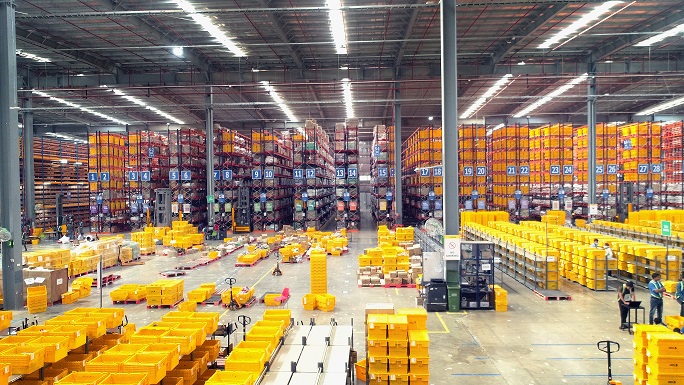Omnichannel Retailing: Gearing for the Next Level of Growth
Digitally savvy customers want a more personalised experience from the comfort of their homes or wherever they are.
On November 9, 2022

Digitally savvy customers want a more personalised experience from the comfort of their homes or wherever they are.
On November 9, 2022
An efficient supply chain management and logistics ecosystem is key to the success of omnichannel retail. To make a business successful, it is important that it focuses on improving customer experience. Even before the Covid pandemic hit the world, the retail industry had started shifting to the digital ecosystem to reach out to its customers and make their shopping experience better. The pandemic only accelerated the pace as more and more consumers opted for online shopping.
Today, digitally savvy customers seek a more personalised experience and they want it from the comfort of their homes or wherever they are. This has forced retailers to rework their strategies to not just adopt the omnichannel approach but also keep innovating to improve sales while providing a seamless and hassle-free shopping experience.

During the pandemic, retailers focused on providing more digital tools to customers to ensure they get the products delivered to their doorstep. From partnering with third-party logistics players that have a presence across various pin codes to tying up with digital payments services providers to offer easy payment gateways and even making return and refund processes seamless, retailers are going the extra mile to ensure customer satisfaction.
In order to build long-term client loyalty, brands are also increasingly fusing the digital and physical worlds, popularly known as “phygital”. This new ‘phygital’ wave is giving customers the convenience of ordering, collecting, returning, and exchanging products both online or at any of the brand’s brick-and-mortar stores.
Major e-commerce brands like Amazon, Flipkart, Myntra, Nykaa Fashion, Tata Cliq, Shoppers Stop, Reliance Retail, Skechers as well as furniture brands like Homelane, Hometown, and Ikea, among others are using the omnichannel model to improve customer experience.
Every evolution comes with its own set of opportunities and challenges. The omnichannel approach has aided brands to acquire more customers, but to ensure brand loyalty, they have to keep innovating.
Understanding the pulse of the market, consumer preferences, changing patterns, new trends, etc. is crucial for brands for customer acquisition and retention. Brands will have to focus on collecting relevant data and offer the right variety of products. Additionally, brands will also have to pay attention to which products are slow moving and accordingly take a call on replacing them and reduce the burden of extra costs.
Reliability and brand trust are important for the success of any brand. For customers, knowing about the availability of the products they are seeking, either online or at stores, is more important. Besides, customers also want to track their orders online. For brands, on the other hand, having real-time visibility of stock also helps them to broaden their portfolio of SKUs.

One of the critical elements in improving the overall shopping experience is having an efficient customer interface. Besides, customer satisfaction and loyalty depend on the quality of grievance redressal by the brand. Therefore, companies will have to design the user interface keeping in mind the customer needs. Integrating chatbots and streamlining the checkout process will also be critical for improving shopping experience.
With individuals in tier 2 and 3 cities switching to online ordering, retail infrastructure investment including presence through omnichannel will continue to increase. Therefore, brands will have to focus on charting out correct strategies going forward.
Fill in the form